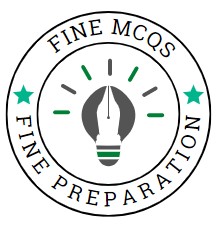Food Sciences MCQs and Quiz
1. Which of the following vitamin(s) is/are water soluble?
(a) A, D
(b) C
(c) Both of them
(d) None of them
2. Mention the fat-soluble vitamins.
(a) 81
(b) E, K
(c) B1
(d) K1
3. Vitamin A is also called retinol. Why is it essential?
(a) Healthy epithelial tissue
(b) Skeletal growth
(c) It prevents night blindness
(d) All of them
4. Which vitamin’s deficiency can cause rickets or bow legs, and overdose can damage kidneys?
(a) D
(b) A
(c) B
(d) E
5. In what Vitamin E is found?
(a) Peanuts
(b) Vegetable Oils, Wheat germ
(c) Green Leafy Vegetables
(d) All of these
6. Protein makes up amino acids, out of them 8 are considered essential because the body cannot synthesize them. What is the total number of amino acids?
(a) 16
(b) 20
(c) 17
(d) 19
7. Which vitamin’s deficiency in the body causes the disease beriberi?
(a) B₁
(b) C
(c) A
(d) D
8. What is the function of vitamin C (ascorbic acid)?
(a) Helps in the healing process and increases the body’s resistance to infection
(b) Important in the formation of blood cells
(c) Plays a part in bone and tissue growth and protects the skin of the human body
(d) All of these
9. Vitamin C’s deficiency causes a disease which is characterized by progressive body weakness, spongy and inflamed gums, loose teeth, swollen and tender joints, and a tendency toward ecchymosis, or absorption by the tissues of blood from ruptured blood vessels. Anemia often occurs as a direct result of such hemorrhage. What is the name of this disease?
(a) Blindness
(b) Scurvy
(c) Cancer
(d) Leukemia
10. How much blood does a normal person have in his body?
(a) About 4 to 5 liters
(b) About 3 to 4 liters
(c) About 2 to 3 liters
(d) About 6 to 7 liters
11. What is Elephantiasis?
(a) Swelling of hands
(b) Swelling of leg
(c) Swelling of Eyes
(d) Swelling of foot
12. Term the time during which an organism is present in the body before causing disease?
(a) Rest period
(b) Incubation period
(c) Sleeping period
(d) Incubation time
13. Which of the following statements is true regarding vitamin C?
(a) It is found in oxygen
(b) It is found in skin
(c) It can be stored in the body
(d) It cannot be stored in the human body
14. What average time is needed for blood clotting?
(a) 2 minutes
(b) 4 minutes
(c) 3 minutes
(d) 5 minutes
15. Which of the following is a rich source of iron?
(a) Green Vegetables
(b) Soya bean
(c) Both of them
(d) None of them
16. Hydrochloric acid is necessary for easy digestion of:
(a) Fats
(b) Enzymes
(c) Food
(d) Proteins
17. Carbohydrates, found in unrefined grains, tubers, vegetables, and fruit, provide a great part of the energy in most human diets. Although carbohydrates are needed for the body’s energy, why they are not considered essential?
(a) Protein can be converted for this purpose
(b) Protein fats can be converted for this purpose
(c) Vitamin D can be converted for this purpose
(d) None of these
18. One gram of carbohydrates gives approximately 4 calories. If consumed in excess then:
(a) These are released with urine
(b) These are converted into fat and stored in the body
(c) These are stored in the liver
(d) These are stored in the bones
19. Why do children require more proteins than adults?
(a) Intake of proteins in children is larger to build strong bones and muscles, and to create resistance against infections.
(b) Protein can be converted for this purpose
(c) Vitamin D can be converted for this purpose
(d) None of them
20. In which process are the dead germs of another disease in suspension called vaccine in the skin of a man introduced?
(a) Deracination
(b) Sublimation
(c) Presentation
(d) Vaccination
21. The process of the introduction of the germs of the same disease below the skin to produce the disease in a mild form and thus give immunity from a severe attack of the same disease is called:
(a) Immunization
(b) Vaccination
(c) Inoculation
(d) None of them
22. Which vitamin is provided by sunlight to the human body?
(a) Vitamin A
(b) Vitamin B
(c) Vitamin C
(d) Vitamin D
23. The only vitamin which the human body can manufacture is:
(a) Vitamin C
(b) Vitamin D
(c) Vitamin K
(d) None of these
24. Ascorbic acid is:
(a) Vitamin A
(b) Vitamin C
(c) Vitamin D
(d) None of these
25. Vitamin C is abundantly found in:
(a) Lemon
(b) Guava
(c) Apple
(d) Amla
26. The digesting enzyme is:
(a) Trypsinogen
(b) Fructose
(c) Both a and b
(d) None of these

